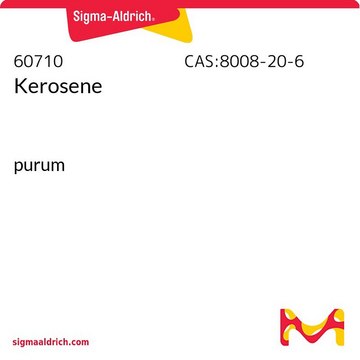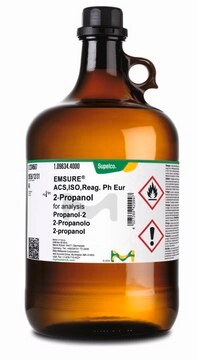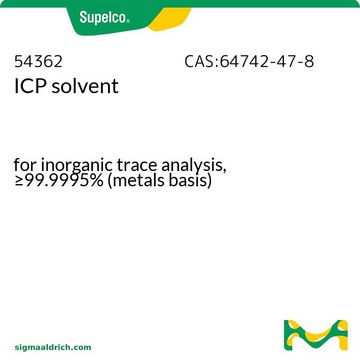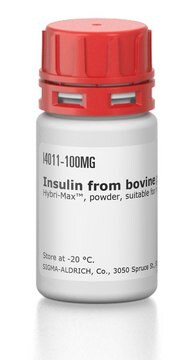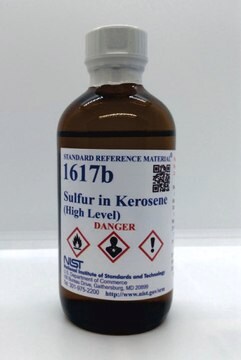329460
Kerosin
reagent grade, low odor
About This Item
Empfohlene Produkte
Qualität
reagent grade
Dampfdichte
4.5 (vs air)
Dampfdruck
0.23 mmHg ( 20 °C)
Form
liquid
Selbstzündungstemp.
442 °F
Expl.-Gr.
5 %
bp
190-250 °C (lit.)
Dichte
0.8 g/mL at 25 °C (lit.)
Suchen Sie nach ähnlichen Produkten? Aufrufen Leitfaden zum Produktvergleich
Allgemeine Beschreibung
Anwendung
- Als Brennstoff bei der Herstellung von Kerosin-Aluminiumoxid-Nanofluid.
- Bei der Herstellung von Kohlenstoff-Nanopartikeln (CNP) durch ein Verfahren der unvollständigen Verbrennung.
- Bei der Synthese von Graphen-Nanostrukturen durch thermischen Zerfall und ein anschließendes modifiziertes Hummers-Verfahren.
Leistungsmerkmale und Vorteile
- Hohe Dichte
- Hohe Enthalpie
- Einfache Lagerung
Menge
18,9 l = 5 gal
Signalwort
Danger
H-Sätze
Gefahreneinstufungen
Aquatic Chronic 2 - Asp. Tox. 1 - Skin Irrit. 2 - STOT SE 3
Zielorgane
Central nervous system
Lagerklassenschlüssel
3 - Flammable liquids
WGK
WGK 2
Flammpunkt (°F)
179.6 °F - closed cup
Flammpunkt (°C)
82 °C - closed cup
Analysenzertifikate (COA)
Suchen Sie nach Analysenzertifikate (COA), indem Sie die Lot-/Chargennummer des Produkts eingeben. Lot- und Chargennummern sind auf dem Produktetikett hinter den Wörtern ‘Lot’ oder ‘Batch’ (Lot oder Charge) zu finden.
Besitzen Sie dieses Produkt bereits?
In der Dokumentenbibliothek finden Sie die Dokumentation zu den Produkten, die Sie kürzlich erworben haben.
Protokolle
Summary application report for analysis of moisture in Kerosene
Unser Team von Wissenschaftlern verfügt über Erfahrung in allen Forschungsbereichen einschließlich Life Science, Materialwissenschaften, chemischer Synthese, Chromatographie, Analytik und vielen mehr..
Setzen Sie sich mit dem technischen Dienst in Verbindung.